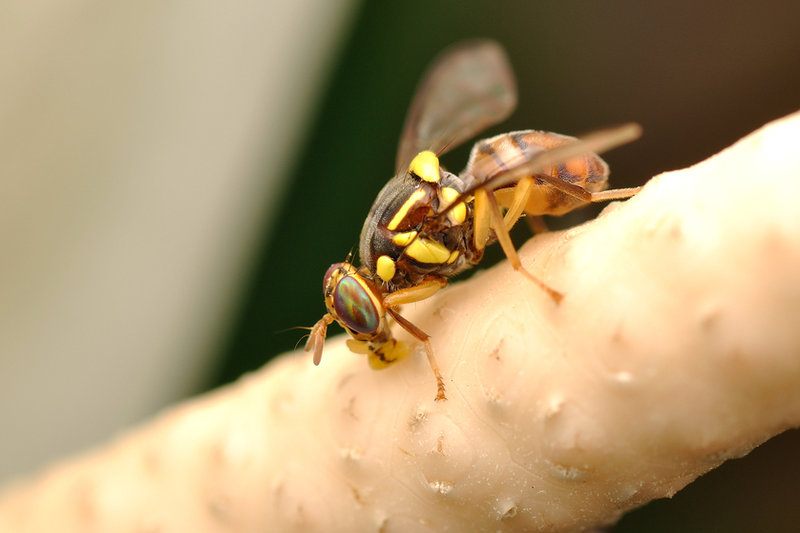
They're here! For the past several decades, a stealthy foe has been secretly infiltrating California, spreading far and wide.
No, they're not Russian spies — they're fruit flies. Several species of fly, including the Mediterranean fruit fly, have been secretly spreading in the state for decades, new research finds.
The study, published today (Aug. 6) in the journal Proceedings of the Royal Society B, also predicts that crop damage resulting from the insect invasion, as well as lost trade due to other countries' refusal to import California produce, could amount to $1.2 billion in lost revenue.
"Despite the several hundred eradication programs that California Food and Agriculture and the USDA [U.S. Department of Agriculture] have launched, these tropical fruit flies have become established in the state," said study co-author James Carey, an entomologist at the University of California, Davis.
Invasive pest
Unlike the harmless, gnatlike Drosophila flies that hover around rotting fruit, the conquering fruit flies invading California devour growing fruit and cause major economic damage. The Mediterranean fruit fly, or medfly, for instance, devastated California crops in 1989. [Image Gallery: Striking Images of Locust Swarms]
To detect the pests, agriculture officials in California have placed about 100,000 traps across the state. California also meticulously searches for any hint of the flies in plants and produce that crosses the state border.
Get the world’s most fascinating discoveries delivered straight to your inbox.
In the past, agriculture officials believed that each time these flies were found, they were coming from outside the state.
Invaders or locals?
But Carey and his colleagues wondered whether the flies were locals. His team looked at every single fruit-fly sighting (about 5,000) in the last several decades and used a statistical model to describe the underlying populations.
If the insects were being reintroduced every time, then fly sightings should be random. But instead, certain types of flies kept cropping up consistently in specific hot spots. For instance, the oriental fruit fly has been captured 12 separate times in Anaheim, Calif.
To Carey's team, that indicated that several fruit-fly species were established and breeding in California — albeit at low levels.
New biology
The findings suggest that the flies are able to lurk for decades without causing a massive infestation.
"This is like a really insidious cancer," Carey told LiveScience. "It's a chronic process, not a rapid growth."
In addition, the flies' gradual, inexorable push into every corner of the state isn't correlated with human migration patterns, which implies the insects can invade new areas with no human help.
If Carey's conclusions are true, then current state eradication efforts won't work. Quarantining fly-infested fruit at the state borders won't stop established populations from breeding, and if the populations are already here, then completely eliminating the flies isn't possible, Carey said.
"They're just so entrenched and widespread," Carey said. "They're here, and we have to plan accordingly."[Where Do Fruit Flies Come From?]
Because trade partners often close their borders to countries with fly infestations, the flies' established presence could cost billions in lost revenue unless California renegotiates trade agreements that include different levels of fly eradication, the study suggests.
The finding reveals the importance of doing long-term research on the flies, said David Haymer, a geneticist at the University of Hawaii who has studied medfly genetics but was not involved in the study.
For instance, doing genetic analysis on the flies can reveal whether new sightings are reintroductions or the result of an established population breeding, Haymer told LiveScience.
Follow Tia Ghose on Twitterand Google+. Follow LiveScience @livescience, Facebook & Google+. Original article on LiveScience.com.

Tia is the editor-in-chief (premium) and was formerly managing editor and senior writer for Live Science. Her work has appeared in Scientific American, Wired.com, Science News and other outlets. She holds a master's degree in bioengineering from the University of Washington, a graduate certificate in science writing from UC Santa Cruz and a bachelor's degree in mechanical engineering from the University of Texas at Austin. Tia was part of a team at the Milwaukee Journal Sentinel that published the Empty Cradles series on preterm births, which won multiple awards, including the 2012 Casey Medal for Meritorious Journalism.


